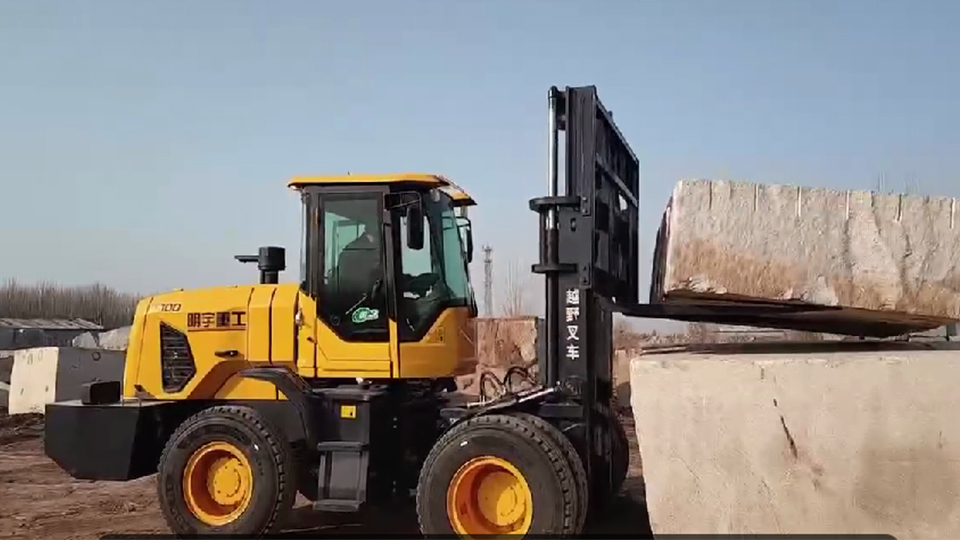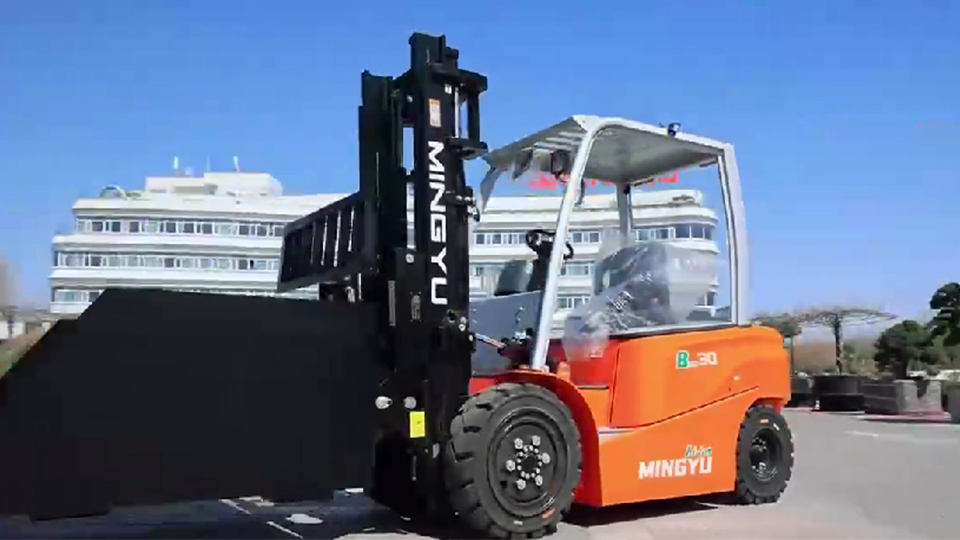
Forklifts are essential workhorses in numerous industries, facilitating the movement of materials with efficiency and precision. However, operating a forklift safely and effectively requires specialized knowledge and skills. This article provides a comprehensive guide to driving a forklift, covering essential safety procedures, operational techniques, and maintenance considerations.
Pre-Operational Checks: Ensuring Safety Before Startup
Before starting any forklift operation, a thorough pre-operational check is crucial. This inspection helps identify potential hazards and ensures the forklift is in safe working condition.
Visual Inspection: Examine the forklift for any visible damage, such as leaks, cracks, or loose components. Pay close attention to the tires, forks, mast, and hydraulic system.
Fluid Levels: Check the engine oil, hydraulic fluid, coolant, and brake fluid levels. Ensure they are within the recommended range.
Tire Condition: Inspect the tires for wear, damage, and proper inflation. Underinflated or damaged tires can affect stability and handling.

Fork Condition: Examine the forks for cracks, bends, or other signs of damage. Ensure they are securely attached and properly aligned.
Safety Equipment: Verify the functionality of the horn, lights, backup alarm, and seatbelt.
Battery or Fuel Level: Check the battery charge (for electric forklifts) or fuel level (for internal combustion forklifts).
Mast and Carriage: Ensure the mast and carriage move smoothly and without any unusual noises.
Controls: Test all controls, including the steering, brakes, accelerator, and lift/tilt levers.
Starting and Operating the Forklift
Once the pre-operational checks are complete, you can start the forklift.
Seatbelt: Always fasten your seatbelt before starting the forklift.
Starting Procedure: Follow the manufacturer's instructions for starting the forklift. This may vary depending on the model and type of forklift.
Initial Movement: Before moving, ensure the area is clear of obstacles and pedestrians. Start moving slowly and smoothly.
Steering: Forklifts have rear-wheel steering, which can be sensitive. Practice steering in an open area to get a feel for the forklift's handling.
Speed Control: Maintain a safe and controlled speed. Avoid sudden acceleration or braking.
Visibility: Ensure clear visibility in all directions. Use mirrors and turn your head to check blind spots.
Load Handling: Picking up and Transporting Loads
Approach the Load: Approach the load slowly and squarely. Position the forks at the appropriate height and width.
Fork Insertion: Carefully insert the forks under the load. Ensure the load is evenly distributed on the forks.
Lifting the Load: Slowly lift the load to a safe traveling height. Avoid lifting the load too high, as this can affect stability.
Tilting the Load: Tilt the mast back slightly to stabilize the load during transport.
Transporting the Load: Drive slowly and smoothly, keeping the load low to the ground. Avoid sharp turns or sudden stops.
Placing the Load: Approach the designated location slowly and carefully. Lower the load gently and ensure it is placed securely.
Fork Removal: Carefully remove the forks from under the load. Ensure the forks are fully lowered before moving away.
Safety Considerations: Preventing Accidents
Safety is paramount when operating a forklift. Adhere to the following safety guidelines:
Pedestrian Safety: Always yield to pedestrians. Sound the horn to warn them of your presence.
Load Capacity: Never exceed the forklift's rated load capacity. Overloading can lead to instability and accidents.
Ramps and Inclines: Exercise caution when operating on ramps or inclines. Drive slowly and avoid sharp turns.
Elevated Loads: Never travel with an elevated load unless necessary. Lower the load as much as possible to maintain stability.

Blind Spots: Be aware of blind spots and use mirrors to check for obstructions.
Hazardous Environments: Exercise caution when operating in hazardous environments, such as confined spaces or areas with flammable materials.
Weather Conditions: Adjust your driving technique to account for weather conditions, such as rain, snow, or ice.
Parking: When parking the forklift, lower the forks to the ground, engage the parking brake, and turn off the engine.
No Riders: Never allow unauthorized riders on the forklift.
Maintenance and Care: Ensuring Longevity
Regular maintenance is essential for keeping your forklift in optimal condition.
Daily Inspections: Conduct daily pre-operational checks to identify any potential issues.
Scheduled Maintenance: Follow the manufacturer's recommended maintenance schedule.
Battery Maintenance: For electric forklifts, ensure the battery is properly charged and maintained.
Tire Maintenance: Check tire pressure and condition regularly.
Hydraulic System Maintenance: Monitor hydraulic fluid levels and check for leaks.
Cleaning: Keep the forklift clean and free of debris.
Specific Forklift Types and Their Operation Differences
It is important to understand that different types of forklifts operate in different ways.
Counterbalance Forklifts: These are the most common type, and utilize a weight in the rear of the machine to help balance the load.
Reach Trucks: These are used in narrow aisle warehouses, and extend the forks to reach loads.
Pallet Jacks: These are used to move pallets short distances. They require less skill than other forklifts, but safety is still paramount.
Rough Terrain Forklifts: These are used outdoors on uneven surfaces. They often have larger tires and stronger engines.
Conclusion
Driving a forklift requires a combination of skill, knowledge, and adherence to safety procedures. By following the guidelines outlined in this article, operators can ensure safe and efficient forklift operation, minimizing the risk of accidents and maximizing productivity. Remember that ongoing training and adherence to safety protocols are crucial for maintaining a safe working environment.
Name: selena
Mobile:+86-13176910558
Tel:+86-0535-2090977
Whatsapp:8613181602336
Email:vip@mingyuforklift.com
Add:Xiaqiu Town, Laizhou, Yantai City, Shandong Province, China